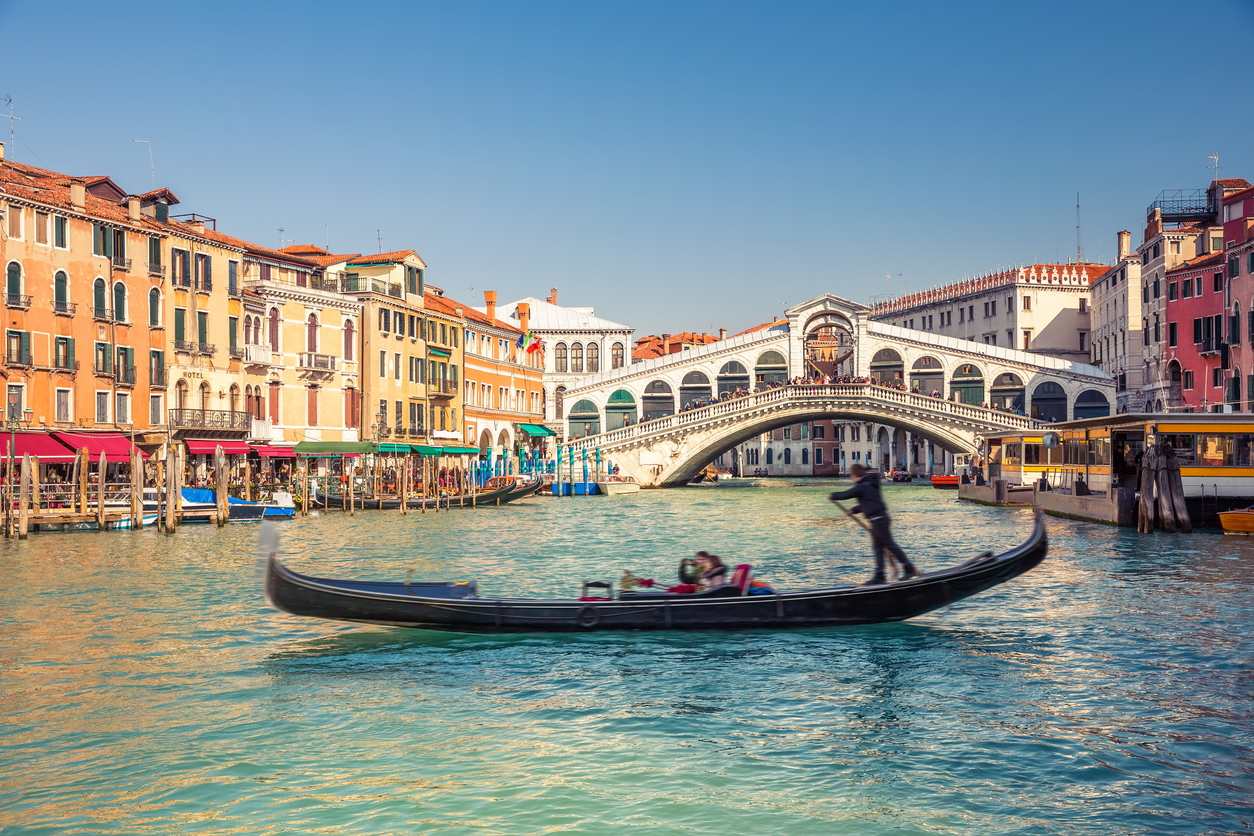
With Gothic spires, domes and towers rising, as if by magic, from the sparkling lagoon below, it’s no wonder Venice has a reputation for romance and mystery.
Wandering the immaculate streets, it’s hard not to be astounded by the ingenuity of the early Venetians, who took a strategic shipping port and turned it into one of the world’s most beautiful cities.
Marvels of modern engineering, such as Dubai’s Burj Khalifa pale in comparison to some of Venice’s humble four-storey brick apartment buildings, which have rested on wooden stilts since the 13th Century.
However, unfortunately, the unparalleled allure of The City of Water, and its natural popularity with cultural-seeking tourists, could also mean its downfall. Every year, 25 million visitors flood the city, putting huge strain on the architecture and infrastructure, which was never designed to withstand such a demand.
Without action, the city is in danger of suffering irreparable damage. But fear not, this doesn’t mean we can’t still marvel at Piazza San Marco, sup Bellinis in Harry’s Bar and snap a selfie on one of the more than 400 bridges that connect the 100-plus islands. We simply have to put more focus on sustainability.
With this in mind, the first stop on my recent weekend break was the small square of Campo SS Apostoli, where travellers from around the world meet to join one of the Venice Free Walking Tours.
Organised and run by locals on a pay-what-you-like basis, the tours take you away from the busy hotspots, helping unearth the authentic side of Venice.
Created with the purpose of supporting sustainable tourism, our expedition covered the eastern part of Cannaregio and the west of the Castello districts, providing the perfect introduction to the city.
Our guide outlined everything from the neighbourhoods’ unique construction to how towering marble cathedrals manage to remain above the waterline (hint: they’re not really all marble), as well as how to avoid being ripped off for plates of substandard pasta – a sacrilegious mistake in Italy.
After two hours pounding the narrow alleyways and criss-crossing from island to island, I had gained a true insight into Venice.
I then finished my afternoon adventure in a bistro quite unlike any other.
Nestled canal side, Sullaluna is a delightful little hole-in-the-wall café-cum-library, where you can enjoy a glass of organic prosecco and delicious local cicchetti (small dishes similar to tapas), while flipping through arty coffee table books.
Looking out on the water at bobbing wooden boats, the hours disappeared faster than my fizz, and I felt every inch the local – despite my grasp of Italian not stretching much further than “grazie” or “prego”. For the remainder of my time in Venice, I kept within the theme of limiting my impact. Rather than hopping on an over-priced gondola, I opted for a three-day vaporetto bus ticket.
I sipped fresh espresso and Aperol Spritz in the Jewish Ghetto away from the crowds and sought-out eateries frequented by locals.
And this dedication to getting off the beaten track led me to one of the best meals I’ve ever enjoyed.
Located in the back streets of Santa Croce, Osteria La Zucca is a tiny trattoria with a varied menu, cosy atmosphere and friendly servers, who were more than happy to recommend local dishes with a modern twist.
If you haven’t been to Venice before, I don’t recommend you skip St Mark’s Basilica, forgo the crowds at the Rialto Bridge or miss out on the chance to see modern masterpieces at the Peggy Guggenheim Collection – indeed, I made wonderfully enjoyable visits to all three.
But by also spending just a few hours living like a local and making the effort to step away from the main streets, you could enhance your trip and discover the real Italy.
And, more importantly, ensure future generations can do the same.
P.S. The best way to explore Venice is on foot – or by boat. The city’s main public transport is a network of water buses, or vaporetti, which shuttle locals and tourists alike from port to port. A single 75-minute ticket costs €7.50 but a one (€20), two (€30) or three-day (€40) pass is more economical. Hop on line one or two for a picturesque trip down the Grand Canal.
Factfile: There are five flights a week from Edinburgh to Venice, starting from just £31. Book your free walking tour at venicefreewalkingtour.com

Enjoy the convenience of having The Sunday Post delivered as a digital ePaper straight to your smartphone, tablet or computer.
Subscribe for only £5.49 a month and enjoy all the benefits of the printed paper as a digital replica.
Subscribe